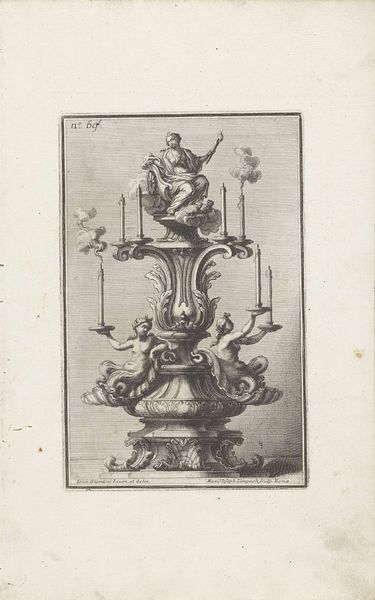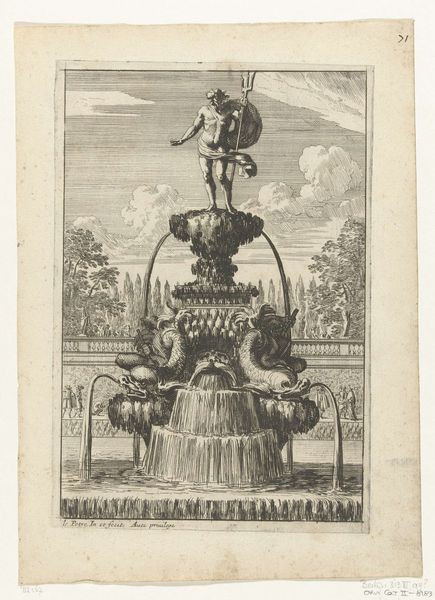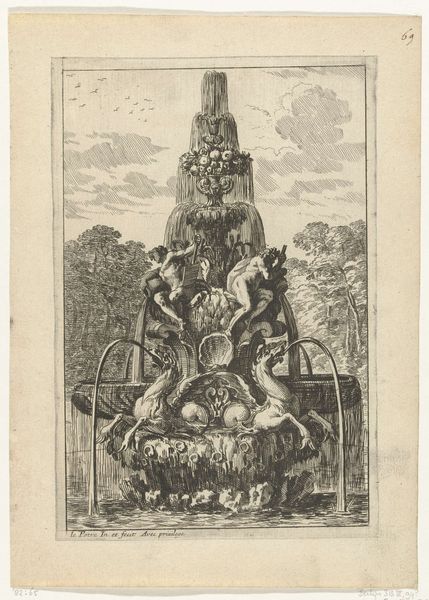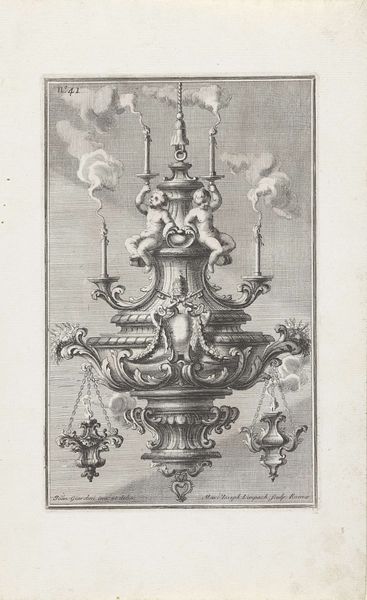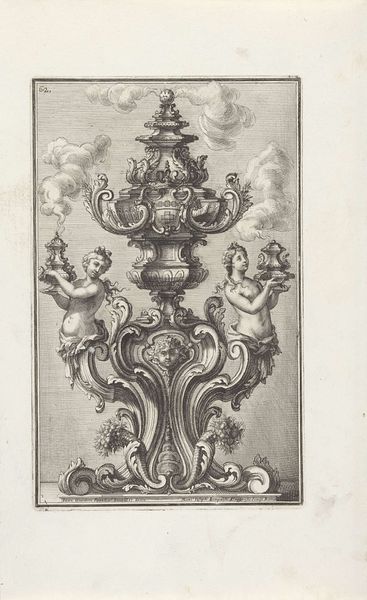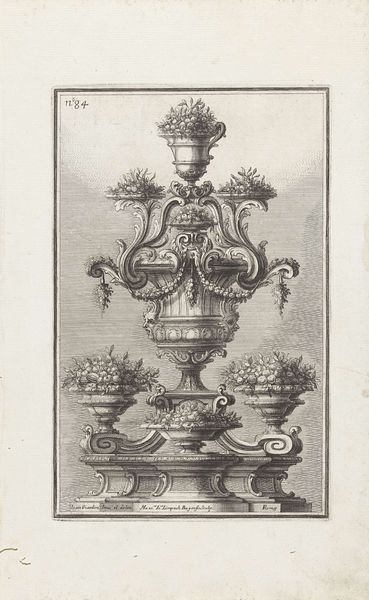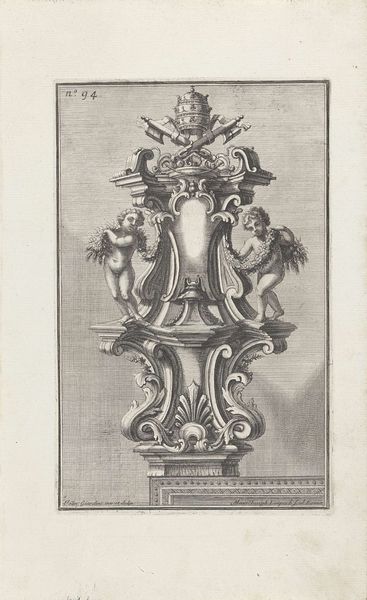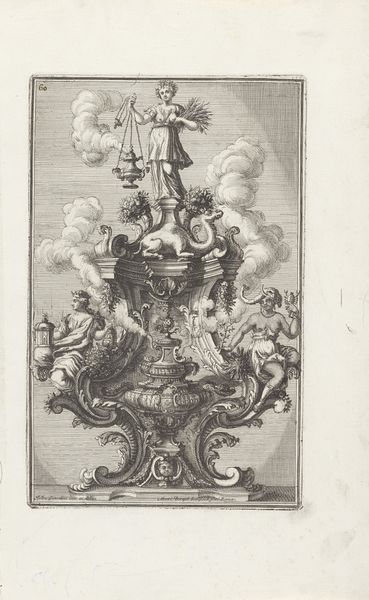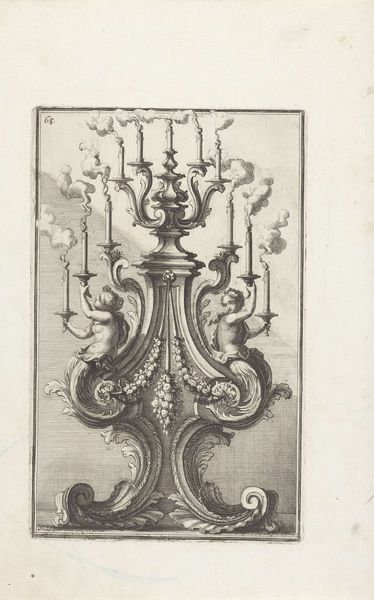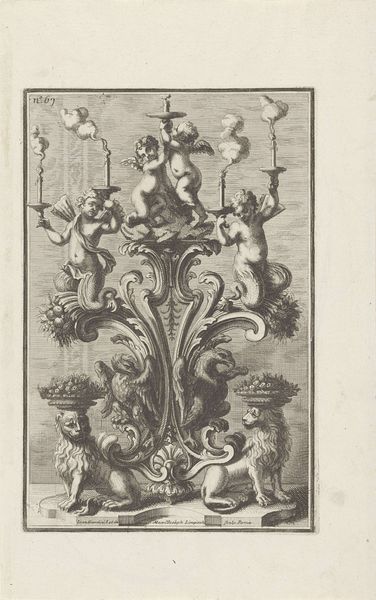
print, engraving, architecture
#
baroque
# print
#
figuration
#
form
#
engraving
#
architecture
Dimensions: height 269 mm, width 175 mm
Copyright: Rijks Museum: Open Domain
Curator: At first glance, this engraving has a distinctly whimsical feel. There's a baroque opulence tempered by a kind of playful lightness. What are your initial impressions? Editor: This is "Fountain with Dolphins and Tritons on Hippocampuses", an engraving created in 1714 by Maximilian Joseph Limpach, currently held at the Rijksmuseum. Curator: The baroque style is immediately apparent in the elaborate ornamentation. Limpach employs an intricate, symmetrical design. Editor: What I find intriguing is how this design reflects the cultural fascination with water features at the time. Elaborate fountains became status symbols for the elite. Curator: Precisely! The architecture is very carefully organized by balance and rhythm; notice how the eye is drawn upwards through carefully considered curves and lines. The positioning of the tritons and dolphins really exemplifies movement and lightness through sculptural form. Editor: And the political implications shouldn't be understated. Patrons would commission such artworks to convey power and refinement. These images helped shape perceptions of social hierarchy. Curator: Consider the technique! The fineness of the engraving, the use of shadow and line to create volume, even within the restricted color palette—demonstrates masterful technical skill, but the interplay is one of formal abstraction against recognizable forms in nature. Editor: To step back from that, this print circulated within a specific market that consumed luxury images like this. The context in which it was received has shaped how we interpret the piece. Curator: Well, regardless, looking closely reveals just how much artistry is involved in organizing these forms and patterns on this two dimensional surface. The careful repetition contributes so strongly to the overall appeal of the print. Editor: Ultimately, what remains with me is how the Baroque era sought to mold not only our environment but how the environment was portrayed—it created systems of image consumption to establish new hierarchies. Curator: A striking point, thank you! For me, seeing how these visual strategies intersect in the organization of formal elements on paper continues to fuel how I interpret such an object and its ongoing value.
Comments
No comments
Be the first to comment and join the conversation on the ultimate creative platform.



